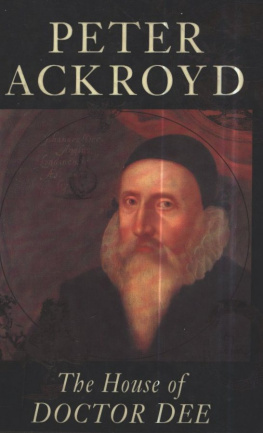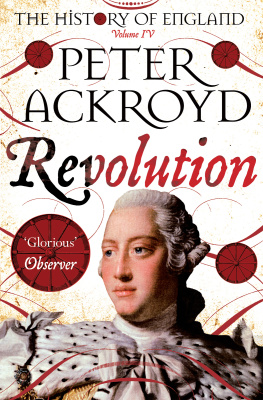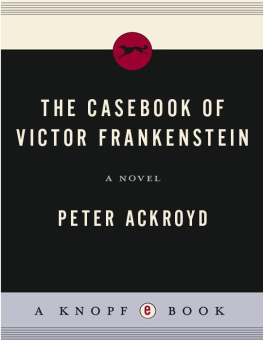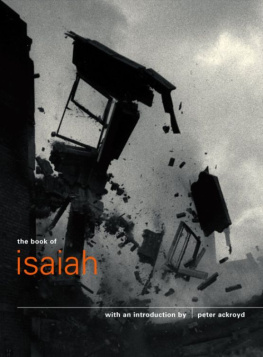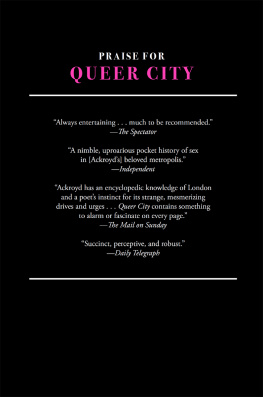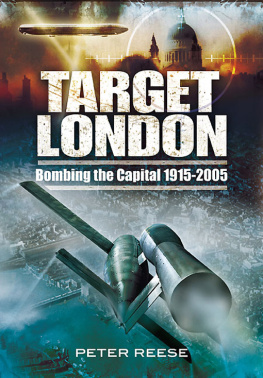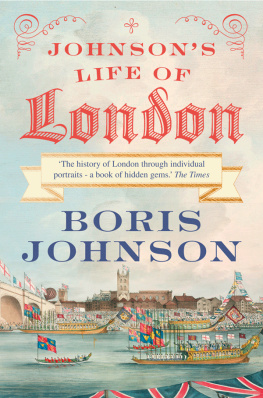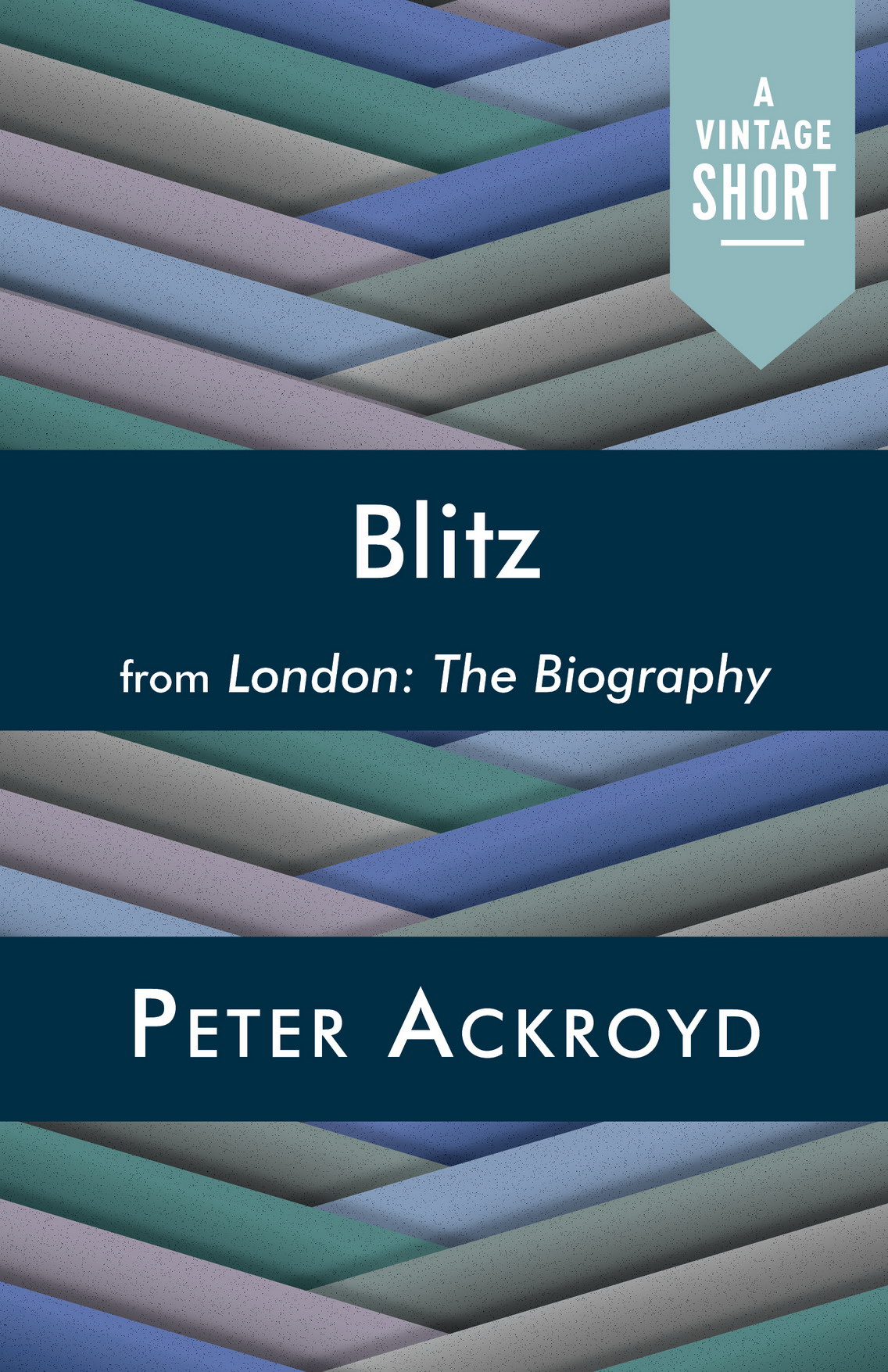Peter Ackroyd
Peter Ackroyd is the author of London: The Biography; Shakespeare: The Biography; Thames: The Biography; and Venice: Pure City; acclaimed biographies of T.S. Eliot, Dickens, Blake, and Sir Thomas More; and several successful novels. He has won the Whitbread Book Award for Biography, the Royal Society of Literatures William Heinemann Award, the James Tait Black Memorial Prize, the Guardian Fiction Prize, the Somerset Maugham Award, and the South Bank Award for Literature.
A LSO BY P ETER A CKROYD
FICTION
The Great Fire of London
The Last Testament of Oscar Wilde
Hawksmoor
Chatterton
First Light
English Music
The House of Doctor Dee
Dan Leno and the Limehouse Golem
Milton in America
The Plato Papers
The Clerkenwell Tales
The Lambs of London
The Fall of Troy
The Casebook of Victor Frankenstein
Three Brothers
NONFICTION
Dressing Up: Transvestism and Drag: The History of an Obsession
London: The Biography
Albion: The Origins of the English Imagination
Venice: Pure City
London Under
BIOGRAPHY
Ezra Pound and His World
T. S. Eliot
Dickens
Blake
The Life of Thomas More
Shakespeare: The Biography
ACKROYDS BRIEF LIVES
Chaucer
J.M.W. Turner
Newton
Poe: A Life Cut Short
Charlie Chaplin
POETRY
Ouch!
The Diversions of Purley and Other Poems
CRITICISM
Notes for a New Culture
The Collection: Journalism, Reviews, Essays, Short Stories, Lectures, edited by Thomas Wright
Blitz
from London: The Biography
Peter Ackroyd
A Vintage Short
Vintage Books
A Division of Penguin Random House LLC
New York
Copyright 2000 by Peter Ackroyd
All rights reserved. Published in the United States by Vintage Books, a division of Penguin Random House LLC, New York, and in Canada by Random House of Canada, a division of Penguin Random House Ltd., Toronto. Originally published in hardcover in the United Kingdom as a part of London by Chatto & Windus, London, in 2000, and subsequently in hardcover in the United States by Doubleday, a division of Penguin Random House LLC, New York, in 2001.
Vintage and colophon are registered trademarks of Penguin Random House LLC.
The Cataloging-in-Publication Data for London is available from the Library of Congress.
Vintage eShort ISBN9781101972526
Cover design by Perry Delavega
www.vintagebooks.com
v4.1
a
Contents
WarNews


I t began with attacks upon outer London. Croydon and Wimbledon were hit and, at the end of August, there was a stray raid upon the Cripplegate area. Then, at five p.m. on 7 September 1940, the German air force came in to attack London. Six hundred bombers, marshalled in great waves, dropped their explosive and high incendiary devices over east London. Beckton, West Ham, Woolwich, Millwall, Limehouse and Rotherhithe went up in flames. Gas stations, and power stations, were hit; yet the Docks were the principal target. Telegraph poles began to smoke, then ignite from base to crown, although the nearest fire was many yards away. Then the wooden block road surface ignited in the searing heat. The firemen had to race, through fire and perpetual explosion, to reach conflagrations which were almost out of hand. The fire was so huge that we could do little more than make a feeble attempt to put it out. The whole of the warehouse was a raging inferno, against which there were silhouetted groups of pigmy firemen directing their futile jets on walls of flame. These reports come from Courage High, a history of London fire-fighting by Sally Holloway. One volunteer was on the river itself where half a mile of the Surrey shore was ablazeburning barges were drifting everywhereInside the scene was like a lake in Hell. In the crypt of a church in Bow people were kneeling and crying and praying. It was a most terrible night.
The German bombers came back the next night, and then the next. The Strand was bombed, St. Thomass Hospital was hit together with St. Pauls Cathedral, the West End, Buckingham Palace, Lambeth Palace, Piccadilly, the House of Commons. Truly to Londoners it seemed to be a war on London. Between September and November almost 30,000 bombs were dropped upon the capital. In the first thirty days of the onslaught almost six thousand people were killed, and twice as many badly injured. On the night of the full moon, 15 October, it seemed as if the end of the world had come. Some compared London to a prehistoric animal, wounded and burned, which would disregard its assailants and keep moving massively onward; this was based on the intuition of London as representing some relentless and ancient force which could withstand any shock or injury. Yet other metaphors were in useamong them those of Jerusalem, Babylon and Pompeiiwhich lent a sense of precariousness and eventual doom to the citys plight. When in the first days of the Blitz Londoners saw the ranks of German bombers advancing without being hindered by anti-aircraft fire, there was an instinctive fear that they were witnessing the imminent destruction of their city.
The earliest reactions were, according to the reports of Mass Observation and other interested parties, mixed and incongruous. Some citizens were hysterical, filled with overwhelming anxiety, and there were several cases of suicide; others were angry, and stubbornly determined to continue their ordinary lives even in the face of extraordinary dangers. Some tried to be jovial, while others became keenly interested spectators of the destruction all around them, but for many the mood was one of spirited defiance. As one anthologist of London history, A.N. Wilson, has put it, the records of the time reveal the perkiness, the jokes, the songs even in the immediate and garish presence of violent death.
It is difficult fully to define that particular spirit, but it is of the utmost interest in attempting to describe the nature of London itself. In his definitive study, London at War, Philip Ziegler has suggested that Londoners made a deliberate effort to seem nonchalant and unafraid, but this self-control may have been a necessary and instinctive unwillingness to spread the contagion of panic. What if this city of eight million people were to regress into hysteria? It was precisely that fate which Bertrand Russell had predicted in a pamphlet, Which Way to Peace?, in which he anticipated that London would become one vast bedlam, the hospitals will be stormed, traffic will cease, the homeless will shriek for peace, the city will be a pandemonium. It is possible that ordinary citizens, with instincts finer than those of their erstwhile betters, knew that this could not be allowed to happen. So the calmness, the resigned resolution of the Londoner was the quality which impressed those coming from outside. In all of its periodic crises, and riots, and fires, London has remained surprisingly stable; it has tipped, and tilted, before righting itself. This may in part be explained by the deep and heavy presence of trade and commerce within its fabric, the pursuit of which rides over any obstacle or calamity. One of Winston Churchills wartime phrases was Business as usual, and no slogan could be better adapted to the condition of London.



